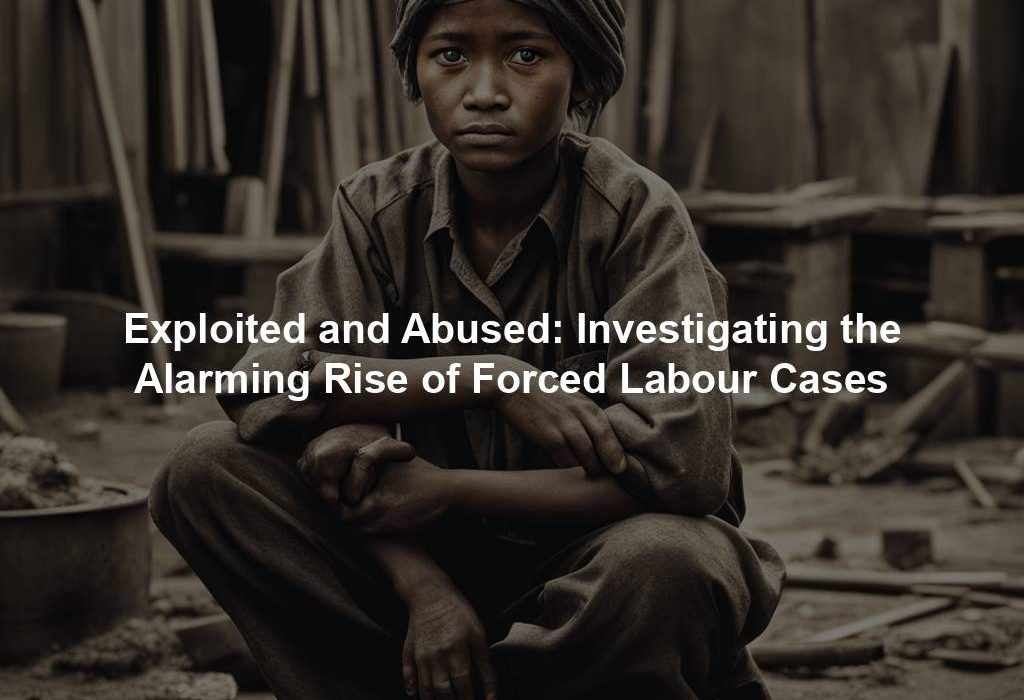The Heart-Wrenching Reality: Unraveling the Epidemic of Coerced Labor Incidents
Coerced labor, or modern slavery, is an issue of global proportions that impacts numerous individuals annually. Despite the measures taken by governments, corporations, and non-governmental organizations to combat this prevalent problem, incidents of coerced labor are on the rise at a disturbing rate. In this investigative piece, we will delve into the underlying causes of coerced labor, analyze the sectors most frequently linked to this exploitation, and propose potential solutions to address this critical human rights crisis.
The Global Reach of Coerced Labor
As per the estimates provided by the International Labour Organization (ILO), around 25 million individuals worldwide are ensnared in coerced labor, with the Asia-Pacific region bearing the brunt of this issue. Sectors commonly associated with coerced labor include agriculture, construction, manufacturing, and domestic work. Within these sectors, marginalized groups such as migrant laborers, women, and children are often exploited and subjected to deplorable working conditions.
The root causes of coerced labor are intricate and varied. Factors such as poverty, limited access to education, gender disparities, and prejudicial treatment all contribute to sustaining this cycle of oppression. Frequently, individuals are coerced into labor under the guise of fair wages and working conditions, only to discover themselves trapped in a situation from which escape seems impossible.
Case Studies: Coerced Labor in the Supply Chain
One prevalent manifestation of coerced labor occurs through the intricate web of the global supply chain. Large corporations frequently engage subcontractors and suppliers in developing nations to secure goods at reduced costs. In their pursuit of profit, these entities may turn a blind eye to the labor practices of their suppliers, thereby perpetuating the cycle of coerced labor.
An extensively documented instance of coerced labor within the supply chain is observed in the Thai fishing industry. Migrant workers from neighboring nations like Myanmar and Cambodia are often trafficked into Thailand and coerced to work on fishing vessels under appalling conditions. These laborers endure physical abuse, extended working hours, and meager wages, with little to no avenues for seeking justice.
Another sector under scrutiny for coerced labor practices is the garment industry. In countries like Bangladesh and Cambodia, laborers, predominantly women and children, toil in sweatshops manufacturing clothing for consumers in Western countries. These individuals endure prolonged work hours for inadequate compensation, with scant consideration for their well-being.
The Responsibilities of Governments and Corporations
Government intervention is pivotal in combating coerced labor. Legislation and enforcement mechanisms are essential to holding employers accountable for their labor practices and safeguarding vulnerable workers. Nevertheless, in numerous regions, deficient labor laws, corruption, and a lack of political will impede efforts to eliminate coerced labor.
Corporations also bear a responsibility to ensure that their supply chains are free from coerced labor. Corporate social responsibility endeavors, ethical sourcing practices, and transparent reporting are vital steps that companies can take to tackle this issue. By collaborating with suppliers to implement equitable labor practices and conducting routine audits of their supply chains, companies can help avert and identify instances of coerced labor.
Potential Remedies and Suggestions
Effectively combating coerced labor necessitates a multifaceted approach. Governments, corporations, and civil society entities must collaborate to address the root causes of coerced labor, fortify labor laws, and enhance protections for vulnerable workers. Educational campaigns and awareness-raising initiatives are crucial in altering societal perceptions of coerced labor and fostering ethical consumerism.
To conclude, coerced labor represents a grave violation of human rights that demands immediate attention. Through unified efforts on local, national, and international fronts, we can strive for a world where all individuals are treated with dignity and respect in their workplaces. By shedding light on the obscured realities of coerced labor and holding perpetrators accountable, we can forge a more just and equitable society for all.




